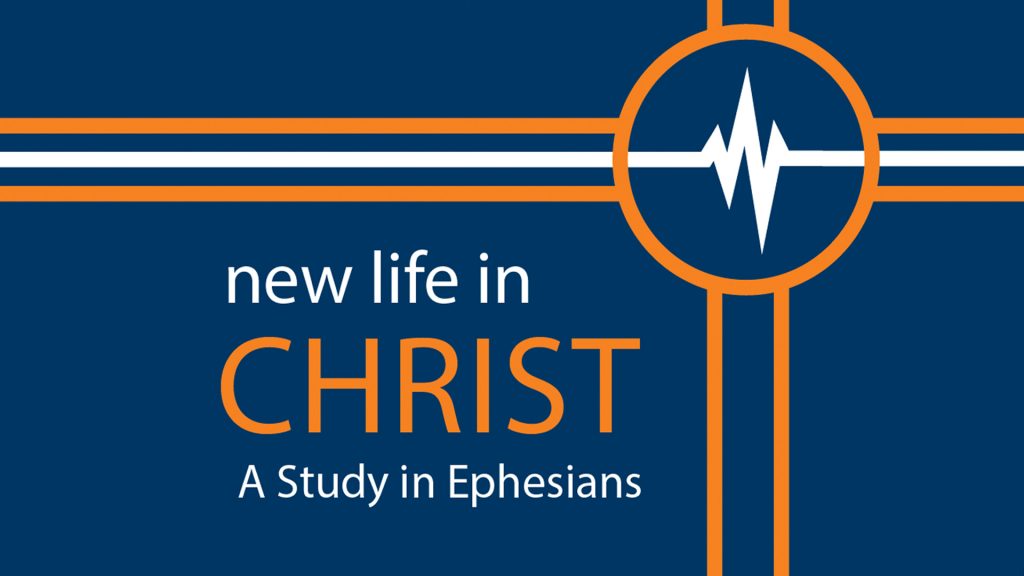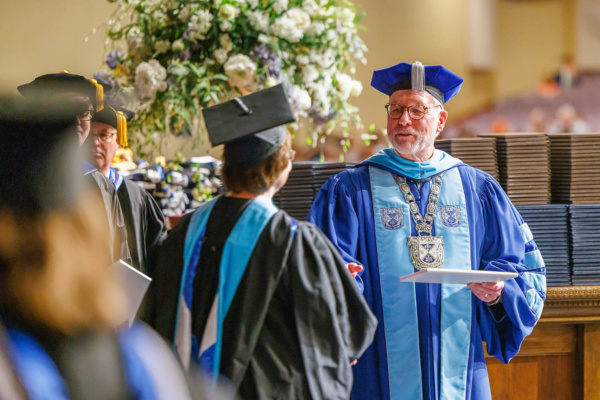What is the most impressive thing you have ever seen? Was it an amazing view of a mountain or an ocean or ancient ruins? Perhaps a remarkable feat of human skill or endurance? Because of our affluence and technology, we have the capability to view photography and explore regions and enjoy experiences that are truly astounding.
But what about the angels? What about those who minister in the immediate presence of God and have a front row seat for all His works? What is most impressive to them? This may initially seem like an unanswerable question. However, Paul tells us in Ephesians 3:10 that by the preaching of the Gospel, God is working so that “now unto the principalities and powers in heavenly places might be known by the church the manifold wisdom of God.” In other words, God the Father is doing something for His Son in the church by His Spirit for His own glory that astonishes the angels. Paul’s letter to the Ephesians declares this glory and directs our response.
In order to understand the background of our study, we will answer four questions in our first two posts.
- Where did Paul’s original audience live?
- How did the Ephesian church begin?
- Why did Paul write this letter?
- What are the letter’s major themes?
The City
Ephesus was a very important city for multiple reasons. First, it was a highly populated city. At the time this epistle was written, Ephesus was the fourth largest city in the Western world (behind Rome; Alexandria, Egypt; and Antioch, Syria, respectively), boasting a population of approximately 250,000 people. Second, Ephesus was important for political reasons. It served as the capital of the Roman province of Asia (essentially, what is now Turkey).
Third, Ephesus stood out because of religion. The primary reason for this prominence was its temple. Located in the heart of the city, the Temple of Diana (whom the Greeks called Artemis) was one of the Seven Wonders of the Ancient World. Probably the largest building in the world at that time, its massive size measured 200 feet wide by 400 feet long. It boasted 127 columns (many overlaid with gold) standing 60 feet tall to support the roof. An annual festival for the goddess Diana brought in up to half a million worshipers each year.
One biblical evidence of Ephesus’ false religion was the inhabitants’ response to Paul’s miracles and preaching. The Ephesians burned so many books about magic that the value was equivalent to nearly 140 years’ pay for an ordinary laborer (Acts 19:19). This renunciation of superstitious idol worship was endangering the local economy and, therefore, the magnificence of Diana and the significance of Ephesus (19:27). The silversmith Demetrius felt so strongly about this turn of events caused by Paul’s influence on the city that he incited a riot (19:24–25).
The Church
Paul came to Ephesus on his way to Jerusalem at the end of his second missionary journey. After his first visit he left a godly couple, Priscilla and Aquila, with the Ephesians (Acts 18:18–21). They were responsible for helping the gifted Apollos by “expound[ing] unto him the way of God more perfectly” (18:26), so that his understanding of Christian baptism went beyond John’s baptism of repentance (18:25). Paul later returned and stayed well over two years teaching and preaching the Gospel (19:10).
The accounts in Acts open a window into the early Ephesian church. There was clearly more Jewish influence in this church than in some other churches the apostle started and later wrote letters to (for example, Philippi). During his time there, Paul taught some disciples of John the Baptist the way of salvation in Christ, and they received the Holy Spirit (19:1–7). In addition, Paul spoke in the Ephesian synagogue for three months “disputing and persuading the things concerning the kingdom of God” (19:8). When mounting Jewish resistance signaled it was time for Paul to cease proclaiming God’s kingdom in the synagogue, “he departed from them and separated the disciples” (19:9). These disciples undoubtedly had a solidly Jewish background.
Paul went next door to “disput[e] daily in the school of one Tyrannus” (19:9). Though this move did not mean the end of Jewish evangelism in Ephesus, clearly his focus had shifted to Gentiles. In fact, the effects of his teaching ministry were astounding: “all they which dwelt in Asia heard the word of the Lord Jesus, both Jews and Greeks” (19:10). The growing number of Gentiles who were forsaking their pagan spirituality and believing the apostolic Gospel (19:18–19) provoked the outrage and riotous leadership of Demetrius (19:24–32). Luke comments, “So mightily grew the word of God and prevailed” (19:20).
The Ephesian church continued to be significant throughout the first century. After Paul’s departure, Timothy became the pastor and stayed there for many years. But Paul continued to care deeply about this church. He shared an emotional farewell with the Ephesian elders on his return trip to Jerusalem (20:17–38). Later, while imprisoned in Rome, Paul wrote to Timothy in Ephesus, not just once (1 Tim. 1:3) but twice (2 Tim. 1:18). According to church history, the apostle John later pastored in Ephesus. Nearly four decades after Christ initially began building His church in Ephesus, its members received the book of Revelation (Rev. 2:1) and probably John’s letters too.
The Letter
Paul wrote this epistle while imprisoned in the city of Rome between A.D. 60 and 62. Since he does not explicitly address specific problems in his letter, this was probably a circular letter written for and distributed to all believers and churches around the city of Ephesus.
Of the 21 New Testament epistles, only Ephesians focuses on God the Father as the primary subject of the letter; all the rest make God the Son the subject. Paul reveals that the Father is preparing a bride for His Son, Jesus Christ. This body, called the church, is made up of believing Jews and Gentiles. In explaining this, Paul unfolds a great mystery hidden in times past, but now revealed to the Gentiles. God has broken down the division that existed between these two groups and created a new humanity (the church), where Jews and Gentiles live together in unity through Jesus Christ.
God designated two religious groups of people in the world: Jews and Gentiles. Gentile was a name given by God to the nations that were separated by God at the tower of Babel (Gen. 10). The Jews originated from the family of Abraham. God’s covenant with this patriarch guaranteed that Abraham’s family would be blessed and would become a great nation. One distinguishing characteristic of the Jews was the circumcision of all males as a sign of God’s covenant with His chosen people. God describes the Gentiles as being heathen (Lev. 26:33, for example). This term later came to mean irreligious, unenlightened and, in many cases, savage. Paul uses the term Gentiles to refer to those who are without Christ, spiritually dead because of their sins (Eph. 2:1) and enslaved to lustful desires (2:2–3).
Since Christ’s coming to earth, many Gentiles have experienced a spiritual conversion. They have been made alive in Christ and raised from spiritual death (2:5–6). They experience a relationship with God through the blood of Christ (2:13) and are now citizens of God’s kingdom and members of God’s family (2:19). Therefore, all believers are called to live worthy of this new life by being different from the unconverted Gentiles (4:1, 17).
Conclusion
Paul wrote this letter to a group of churches near a prominent city in the Roman Empire. The church in Ephesus consisted of both Jews and Gentiles, who faced understandable challenges in being unified with one another as well as distinct from their godless culture. Therefore, the Holy Spirit guided Paul to write a letter full of rich theology and practical application.
To understand the church’s identity and purpose, we have to begin with God the Father’s plan to rescue sinful people through the blood of His Son and preserve them by His Spirit. As part of this glorious work, God mercifully reconciles us who were His enemies to Himself and unites us across ethnic lines as one body to bring Him glory. And when we begin to comprehend some of the dimensions of His gracious love, we are positioned to apply redemptive truth in everyday choices and relationships and thereby grow into the likeness of Jesus Christ. This is new life in Christ.
Hear Dr. Pettit expound on the background of Ephesians in this chapel message:
Join us for chapel every Monday through Thursday at 11 a.m. EST.








